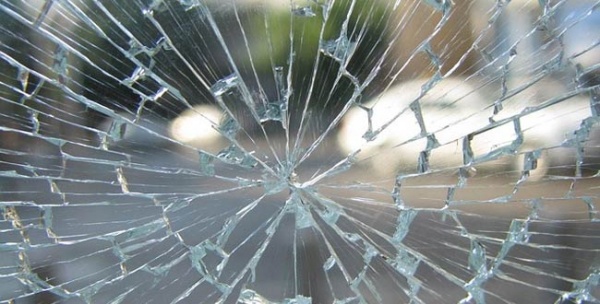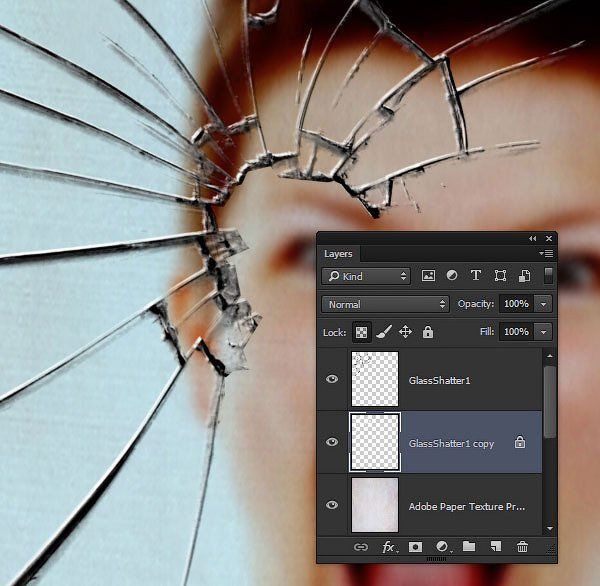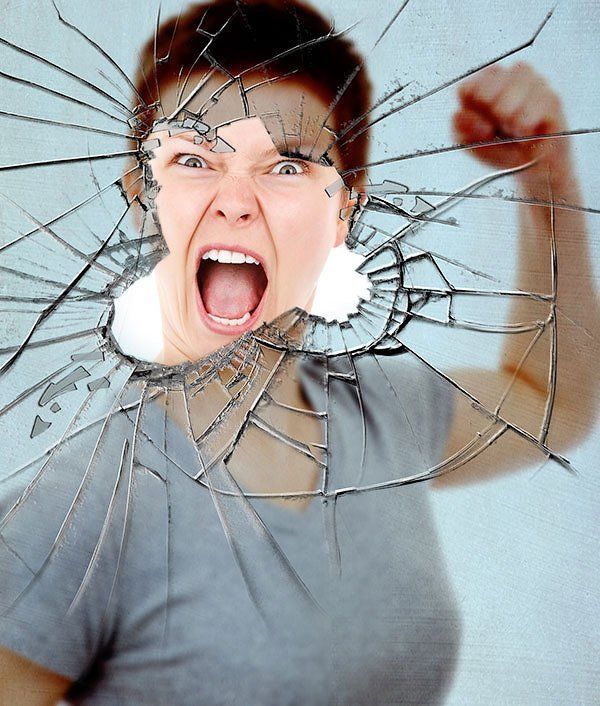The broken windows theory. Broken windows theory: practical meaning
Do you want to live better? Read article about theory broken windows, maintain order and change the world around you!
I think every person noticed behind him: if impeccable cleanliness reigns on the street, then you will begin to look for the urn, because your hand will not rise to throw a candy wrapper on the street.
But, if you stop the car on a filthy roadside, then the temptation is not to carry garbage with you, but to throw it here (well, what, after all, nothing will worsen the already deplorable state of the roadside).
This is roughly what makes sense. broken windows theory which we will talk about today.
What led to the emergence of the broken windows theory?
One day, I stumbled upon an article about crime in New York quite by accident.
Since I like this city for its ebullient energy and many other positive character traits, I decided to read the article and almost regretted it when I got to the horrifying numbers.
It turns out that in the 1980s the criminogenic situation in the Big Apple was simply horrendous: more than one and a half thousand crimes of various severity were committed daily, about 10 people said goodbye to their lives per day.
The police could not do anything with all this lawlessness.
But the most terrible place was not the night streets, but the subway, moreover, at any time of the day. Terribly dirty cars, graffiti on the walls, a sea of homeless people, thieves and perverts - all this made those who were forced to use the New York subway tremble daily with fear.
And then a small miracle happened.
The post of head of the subway was taken by such a David Gunn.
He had to solve a lot of problems, but he surprised everyone by starting to deal with ... graffiti on the walls of the cars.
New Yorkers were indignant: “Here is a populist, he found something to fight with, with pictures!”.
But Gunn, apparently familiar with the theory of broken windows, stood his ground: big chaos starts with small riots, so he and his subordinates cleaned the graffiti cars with maniacal thoroughness.
And it worked: in the early 1990s, the New York subway became almost safe and almost attractive territory.
What is the essence of the theory of broken windows?
The broken windows theory was first developed by forensic sociologists J. Wilson and J. Kelling in the early 1980s.
They argued that minor offenses should not be ignored, because they are an indicator of a worsening crime situation.
If such minor offenses as improper parking, smoking in unauthorized places, travel without a ticket in public transport and others are prevented in time, then the number of serious crimes can be reduced to a minimum.
The American criminologists chose the name for their theory not by chance, since they cited the most common offense in the 1980s in the United States as an example: breaking windows.
The theory of broken windows is based on the fact that if you do not replace a broken window, for example, in your country house, then get ready for the fact that very soon you will be able to see holes instead of windows, and a little later your country house will be attacked by vandals or arsonists. .
How did Mer Giuliani build his career on the application of the broken windows theory?
After Gann, measures were taken to put into practice the theory of broken windows largest city in the USA (New York) Giuliani, who was crowned in office in 1994.
Let's just say that he didn't get the city in best condition: he continued to choke in crime, filth and chaos.
Enlisting the help of Police Chief Bratton (who had previously been the head of the transport police and helped Gunn clean up the subway), Giuliani began to deal with such petty crimes that his predecessors did not pay any attention to: fights, graffiti on walls, illegal parking, throwing garbage and in the wrong place.
Naturally, he was attacked in the same way as in his time against Gunn, but Giuliani was unshakable.
And he turned out to be absolutely right when he applied the theory of broken windows in city management: by the end of the 1990s, New York became the safest metropolis in the United States, the number of crimes committed in it decreased by 2.5 times.
How did Dutch scientists prove the reality of the broken windows theory?
Not to say that everyone was delighted with the appearance of the theory of broken windows and instantly became its adherents.
There were enough naysayers who said, “Yeah, well, that whole broken windows theory of yours is bullshit. We need to deal with serious crimes. Punish rapists, murderers and bank robbers, then petty hooligans will turn their tails and will not foul."
And even though Subway Director Gunn and Mayor Giuliani of New York managed to stop the great chaos and improve the situation in their subordinate households through the use of the theory of broken windows, skeptics and grumblings did not give up.
And then scientists from the University of Groningen, which is located in the Netherlands, got down to business.
A group of sociologists was not too lazy to conduct as many as 6 experiments that proved the effectiveness of the theory of broken windows and shut the mouths of unbelievers.
In each, 2 tests were carried out:
- "the order is observed";
- "order is broken".
I would like to tell you about two, in my opinion, the most interesting experiments:
Broken windows theory: how to deal with annoying ads

This experiment was carried out near a popular bike rack shop in Groningen.
While people were shopping, advertisements for sports goods were put on their bikes.
The urn was hidden, so the bike owners had three options:
- throw advertising at your feet;
- donate it to a nearby vehicle;
- take it with you to throw it in the nearest trash can.
Only the last of the options was not a violation of law and order.
Two tests were carried out:
The order has been followed.
Initially, the wall, near which the townspeople park their bicycles, was clean, and the whole territory was cleaned from debris.
Only 33% of cyclists committed an offense, the rest took the advertisement with them.
The order is broken.
The wall was decorated with patterns and some rubbish was scattered around.
69% of bike owners decided not to bother and committed a crime, albeit a minor one.
Broken windows theory: Is it easy to provoke a person into petty theft?
In a mailbox that was on the street, scientists from the same Netherlands University put a transparent envelope in which there was a banknote of several euros.
Sociologists hid in the nearest bushes and believed that people would dare to steal this bill.
Again, two tests were conducted for people walking by:
The order has been followed.
The mailbox was perfectly clean, as was the area around.
13% of pedestrians decided to profit and steal an envelope with five euros.
The order is broken.
The mailbox was painted with stupid graffiti and garbage was scattered around.
The number of thieves increased to 27%.
See also short video
about the broken windows theory.
Draw your own conclusions!
As you can see broken windows theory found its confirmation both in theory and in practice.
If we want to live better, we must take care not to commit petty offenses: do not throw garbage past the bins, do not break benches, do not paint walls, do not destroy green spaces, do not poison everyone around with tobacco smoke, etc.
When all the windows in our common house are intact, then much less serious crimes will be committed.
Useful article? Don't miss out on new ones!
Enter your e-mail and receive new articles by mail
In this tutorial, I'll show you how to add a broken glass effect to a photo.
Final result:
To complete the tutorial, you will need the Broken Glass brushes. Download the brushes attached to this tutorial. To download the brushes, go Editing - Presets - Manage Presets(Edit > Presets > Preset Manager). In the window that appears, click the button Download(Load) and select the source file.

So 12 new Broken Glass brushes will be added to your brush set.
1. How to Create a Glass Effect on an Image
The main idea is to create the feeling of window glass in front of the model. One of the most effective methods for this is to create a duplicate of the original image, which will be visually different from the original. There will be a fairly small difference between them, which will be visible when we create the broken glass effect, and it will be obvious that both images are different from each other.
Step 1
Open the original model image. Duplicate layer (Ctrl+J) or navigate Layer - New - Copy to New Layer(Layer > New > Layer Via Copy).

Step 2
Darken the duplicate image with an adjustment Levels(Levels). For this, let's go Image - Correction - Levels(Image > Adjustments > Levels (Ctrl + L)). Move the left slider to the right until the bottom value is 100.

Step 3
Now, blur the duplicate image with a filter Gaussian blur(Gaussian Blur). For this, let's go Filter - Blur - Gaussian Blur(Filter > Blur > Gaussian Blur). Install radius(Radius) Blur 10 px.

Step 4
Set the foreground color to a pale blue #dbfaff. Create a new layer, go Layer - New - Layer(Layer > New > Layer) or press the keys (Shift + Ctrl + N), and then press the keys (Alt + Backspace) to fill the layer with the selected color shade. Change the blending mode for this layer to Multiplication(Multiply).

Step 5
This step is optional. If you have the Adobe Paper Texture Pro extension (this option can be found via Window - Extensions(Windows > Extensions)), then you can pick up a great texture to simulate dirt or dust on the glass surface. I used the Gertrude_Jekyll texture, set the blend mode for this texture layer to Linear dimmer(Linear Burn), and also reduce opacity(Opacity) layer up to 70%.
Translator's note: Photoshop, try applying a filter Add Noise(Addnoise) to recreate the texture of the glass, or choose a suitable texture from the set, perhaps creating a stained glass window.

2. Breaking glass
So, we have prepared a window pane that our heroine will break. The idea is to use the Broken Glass brush to create a chipped hole in the glass surface.
Step 1
Create a new layer, select one of the Shattered Glass brushes—I started with the 'Shattered Glass 03' brush. Make sure the brush color is black and just click once on the layer with the brush.

Step 2
Next, using the tool Rectilinear lasso(Polygonal Lasso Tool (L)), carefully outline the central part of the broken glass, as well as the completely lower right part. Press the (Delete) key to delete the selection. Don't forget to deselect the active selection ((Ctrl+D) or (Select > Deselect)).

Step 3
Choose a tool moving(Move Tool (V)). Hold (Alt) + drag the broken glass layer down, this way you will create a duplicate of the layer, placing it below the original layer.

Step 4
While on the duplicate of the broken glass layer, click on the icon (Lock the Transparency) of the layer, which is located above the layer thumbnail in the Layers Palette Tools ( translator's note: do not confuse with the black lock). Make sure the background color is set to White color. Now, press the keys (Ctrl + Backspace) to fill the layer with the background color. Function Preserves pixel transparency(locked transparency) means that only visible pixels will be filled with a color tint. It's very simple and easy way change the color of the layer's pixels without applying other settings.

Step 5
Press the directional up arrow key three times and then press the left key twice to slightly move the duplicate white fill layer. In this way, we will create a feeling of visual thickness of the broken glass.

Step 6
Continue adding broken glass effects around the model's face. To create this effect, I used four different pairs of layers (one dark layer, one light layer) with broken glass.

Step 7
Hold down the (Shift) key and select all layers except for the original model photo layer. Next, let's go Layer - Group layers(Layer > Group Layers (Ctrl+G)) to group all created layers into one group.

Step 8
Select the tool again Rectilinear lasso(Polygonal Lasso Tool) to select the inner area by creating a hole in the window pane. Next, let's go Layer - Layer Mask - Hide Selection(Layer > Layer Mask > Hide Selection) to add a layer mask to the layer with the group, so we can see the original photo through the created layer mask. In the settings panel for the layer mask, set the value Feathers(Feather) 4.0 px to show the thickness of the glass at the edges of the selection.
Translator's note: for those who have an older version of the programphotoshop value Feathers(Feather) set in the tool settings Rectilinear lasso(PolygonalLassoTool).

3. Shards of glass
If the girl really breaks the window, then there must be flying pieces of glass. The set of brushes that you downloaded just have brushes with broken glass shards for this purpose. Let's use them to add some realism to our scene.
Step 1
Repeat the whole process as described above, creating a couple of black and white layers, as well as using brushes with shards of broken glass.

Step 2
Create a new layer above the broken glass layer. With a tool Rectilinear lasso(Polygonal Lasso Tool), create a selection around the pieces of broken glass. Fill the selected area with a bluish-green tint - I used the shade #bbd2d9, and also change the blending mode for this layer to overlap(Overlay). Don't forget to deselect the active selection ((Ctrl+D) or Selection - Deselect(Select > Deselect)).

Step 3
Select the layers with broken glass fragments to group them into one group, for this we go Layer - Group layers(Layer > Group Layers (Ctrl+L)). Double click on the layer with the created group to apply layer styles. Add a layer style Gradient overlay(Gradient overlay). Set the following settings.
- Blend Mode(Blend Mode): Multiplication(Multiply)
- Opacity(Opacity): 57%

The result should be like the screenshot below.

Step 4
Add more glass shards using the same technique by creating additional glass shard layers, or simply duplicate the first shard group and then apply the tool Free transformation(Free Transform tool), for this we go Editing - Free Transform(Edit > Free Transform tool). With this tool, you can move, rotate the fragments, apply scaling to them, placing the fragments in a new place.

You can see the final result in the screenshot below!

Congratulations! We have completed the lesson!
Thanks for being with me. Hope you enjoyed this tutorial.
In the 1980s, New York was a hell of a hell. Over 1,500 violent crimes were committed there EVERY DAY. 6-7 kills per day. It was dangerous to walk the streets at night, and it was risky to ride the subway even during the day. Robbers and beggars on the subway were commonplace. Dirty and damp platforms barely lit. It was cold in the carriages, rubbish was lying underfoot, the walls and ceiling were completely covered with graffiti.
Here's what they said about the New York subway:
“After standing in an endless line for a token, I tried to lower it into the turnstile, but found that the coin mechanism was damaged. Some tramp was standing nearby: having broken the turnstile, now he demanded that the passengers give the tokens to him personally. One of his buddies leaned over to the coin machine and pulled out stuck tokens with his teeth, drooling all over. The passengers were too scared to argue with these guys: "Here, take this damn token, what do I care!" Most people passed the turnstiles for free. It was a transport version of Dante's hell."
The city was in the grip of the worst crime epidemic in its history.
But then the inexplicable happened. Having reached a peak by 1990, crime began to decline sharply. Over the next few years, the number of murders has decreased by 2/3, and the number of serious crimes by half. By the end of the decade, there were already 75% fewer crimes in the metro than at the beginning. For some reason, tens of thousands of psychos and gopniks stopped breaking the law.
What happened? Who pressed the magic stop tap and what is this tap?
Its name is The Broken Windows Theory. Canadian sociologist Malcolm Gladwell, in his book The Tipping Point, says:
Broken Windows is the brainchild of forensics Wilson and Kelling. They argued that crime is the inevitable result of a lack of order. If the window is broken and not glazed, then those passing by decide that no one cares and no one is responsible for anything. Soon more windows will be broken, and the feeling of impunity will spread throughout the street, sending a signal to the whole neighborhood. A signal calling for more serious crimes."
Gladwell deals with social epidemics. He believes that a person breaks the law not only (and not even so much) because of poor heredity or improper upbringing. What he sees around him is of great importance. Context.
Dutch sociologists confirm this idea (). They conducted a series of curious experiments. For example, like this. Litter bins were removed from the bicycle parking lot near the store and flyers were hung on the handlebars of bicycles. They began to observe - how many people will throw flyers on the pavement, and how many will be ashamed. The wall of the store where the bikes are parked was perfectly clean.
Leaflets were thrown on the ground by 33% of cyclists.
Then the experiment was repeated, having previously painted the wall with meaningless drawings.
69% of cyclists have already littered.
But back to New York in the era of wild crime. In the mid-1980s, the management of the New York subway changed. The new director, David Gunn, began work with ... the fight against graffiti. It cannot be said that the entire city community was delighted with the idea. "Boy, take care of the big stuff - technical issues, fire safety, crime… Don’t waste our money on nonsense!” But Gunn was persistent:
“Graffiti is a symbol of the collapse of the system. If we start the process of restructuring the organization, then the first thing to do is to defeat graffiti. Without winning this battle, no reforms will take place. We are ready to introduce new trains worth 10 million dollars each, but if we do not protect them from vandalism, we know what will happen. They will last one day, and then they will mutilate them.
And Gann gave the command to guard the cars. Route after route. Composition after composition. Every damn car, every single day. “It was like a religious act for us,” he later said.
Washing points were installed at the end of the routes. If the car came with graffiti on the walls, the drawings were washed off during the turnaround, otherwise the car was taken out of service altogether. Dirty cars, from which the graffiti had not yet been washed off, were by no means mixed with clean ones. Gunn delivered a clear message to the Vandals.
“We had a depot in Harlem where the cars were parked at night,” he said. - On the first night, teenagers came and splattered the walls of the cars with white paint. The next night, when the paint was dry, they came and traced the contours, and a day later they painted it all. So they worked 3 nights. We waited for them to finish their "work". Then we took rollers and painted over everything. The guys were upset to tears, but everything was painted over from top to bottom. This was our message to them: “Do you want to spend 3 nights disfiguring a train? Let's. But no one will see it...
In 1990, William Bratton was hired as chief of the transport police. Instead of taking up a serious matter - serious crimes, he came to grips with ... stowaways. Why?
The new police chief believed that, like the problem of graffiti, a huge number of "hares" could be a signal, an indicator of a lack of order. And this encouraged the commission of more serious crimes. At that time, 170 thousand passengers made their way to the subway for free. Teenagers simply jumped over the turnstiles or broke through by force. And if 2 or 3 people were cheating the system, those around them (who otherwise wouldn't break the law) would join them. They decided that if someone didn't pay, they wouldn't either. The problem grew like a snowball.
What did Bratton do? He put up 10 disguised policemen near the turnstiles. They grabbed the "hares" one by one, handcuffed them and lined them up in a chain on the platform. The stowaways stood there until the “big catch” ended. After that, they were escorted to a police bus, where they were searched, fingerprinted and punched through the database. Many had weapons with them. Others got in trouble with the law.
“For the cops, it was a real El Dorado,” Bratton said. “Each detention was like a bag of popcorn with a surprise in it. What kind of toy will I get now? Pistol? Knife? Got permission? Wow, you got murder! .. Pretty quickly, the bad guys got wiser, began to leave weapons at home and pay for travel.
Rudolph Giuliani was elected mayor of New York in 1994. He pulled Bratton out of the Transportation Authority and appointed him the city's chief of police. By the way, Wikipedia says that it was Giuliani who first applied the Broken Windows Theory. Now we know that this is not the case. Nevertheless, the mayor's merit is undeniable - he gave the command to develop a strategy on a New York scale.
The police took a fundamentally tough stance towards petty offenders. Arrested everyone who drank and rioted in public places. Who threw empty bottles. Painted the walls. He jumped through turnstiles, begged money from drivers for wiping windows. If someone peed on the street, they went straight to jail.
The urban crime rate began to drop sharply - as quickly as in the subway. Police Chief Bratton and Mayor Giuliani explain: "Small and seemingly insignificant offenses served as a signal for the commission of serious crimes."
Chain reaction was stopped. Thoroughly criminal New York by the end of the 1990s became the safest metropolis in America.
The magic stopcock worked.
In my opinion, the Broken Windows Theory is quite multifaceted. You can apply it to different areas of life: communication, raising children, work… In the next post I will show how it relates to “harmony with ourselves and the world” – our attitude and way of living.
In the 1980s, New York was a hell of a hell. Over 1,500 violent crimes were committed there EVERY DAY. 6-7 kills per day. It was dangerous to walk the streets at night, and it was risky to ride the subway even during the day. Robbers and beggars on the subway were commonplace. Dirty and damp platforms barely lit. It was cold in the carriages, rubbish was lying underfoot, the walls and ceiling were completely covered with graffiti.
Here's what they said about the New York subway:
“After standing in an endless line for a token, I tried to lower it into the turnstile, but found that the coin mechanism was damaged. Some tramp was standing nearby: having broken the turnstile, now he demanded that the passengers give the tokens to him personally. One of his buddies leaned over to the coin machine and pulled out stuck tokens with his teeth, drooling all over. The passengers were too scared to argue with these guys: "Here, take this damn token, what do I care!" Most people passed the turnstiles for free. It was a transport version of Dante's hell."
The city was in the grip of the worst crime epidemic in its history.
But then the inexplicable happened. Having reached a peak by 1990, crime began to decline sharply. Over the next few years, the number of murders has decreased by 2/3, and the number of serious crimes by half. By the end of the decade, there were already 75% fewer crimes in the metro than at the beginning. For some reason, tens of thousands of psychos and gopniks stopped breaking the law.
What happened? Who pressed the magic stop tap and what is this tap?
Its name is The Broken Windows Theory. Canadian sociologist Malcolm Gladwell, in his book The Tipping Point, says:
Broken Windows is the brainchild of forensics Wilson and Kelling. They argued that crime is the inevitable result of a lack of order. If the window is broken and not glazed, then those passing by decide that no one cares and no one is responsible for anything. Soon more windows will be broken, and the feeling of impunity will spread throughout the street, sending a signal to the whole neighborhood. A signal calling for more serious crimes."
Gladwell deals with social epidemics. He believes that a person breaks the law not only (and not even so much) because of poor heredity or improper upbringing. What he sees around him is of great importance. Context.
Dutch sociologists confirm this idea (). They conducted a series of curious experiments. For example, like this. Litter bins were removed from the bicycle parking lot near the store and flyers were hung on the handlebars of bicycles. They began to observe - how many people will throw flyers on the pavement, and how many will be ashamed. The wall of the store where the bikes are parked was perfectly clean.
Leaflets were thrown on the ground by 33% of cyclists.
Then the experiment was repeated, having previously painted the wall with meaningless drawings.
69% of cyclists have already littered.
But back to New York in the era of wild crime. In the mid-1980s, the management of the New York subway changed. The new director, David Gunn, began work with ... the fight against graffiti. It cannot be said that the entire city community was delighted with the idea. "Boy, take care of the big stuff - technical issues, fire safety, crime... Don't waste our money on bullshit!" But Gunn was persistent:
“Graffiti is a symbol of the collapse of the system. If we start the process of restructuring the organization, then the first thing to do is to defeat graffiti. Without winning this battle, no reforms will take place. We are ready to introduce new trains worth 10 million dollars each, but if we do not protect them from vandalism, we know what will happen. They will last one day, and then they will mutilate them.
And Gann gave the command to guard the cars. Route after route. Composition after composition. Every damn car, every single day. “It was like a religious act for us,” he later said.
Washing points were installed at the end of the routes. If the car came with graffiti on the walls, the drawings were washed off during the turnaround, otherwise the car was taken out of service altogether. Dirty cars, from which the graffiti had not yet been washed off, were by no means mixed with clean ones. Gunn delivered a clear message to the Vandals.
“We had a depot in Harlem where the cars were parked at night,” he said. - On the first night, teenagers came and splattered the walls of the cars with white paint. The next night, when the paint was dry, they came and traced the contours, and a day later they painted it all. So they worked 3 nights. We waited for them to finish their "work". Then we took rollers and painted over everything. The guys were upset to tears, but everything was painted over from top to bottom. This was our message to them: “Do you want to spend 3 nights disfiguring a train? Let's. But no one will see it...
In 1990, William Bratton was hired as chief of the transport police. Instead of taking up a serious matter - serious crimes, he came to grips with ... stowaways. Why?
The new police chief believed that, like the problem of graffiti, a huge number of "hares" could be a signal, an indicator of a lack of order. And this encouraged the commission of more serious crimes. At that time, 170 thousand passengers made their way to the subway for free. Teenagers simply jumped over the turnstiles or broke through by force. And if 2 or 3 people were cheating the system, those around them (who otherwise wouldn't break the law) would join them. They decided that if someone didn't pay, they wouldn't either. The problem grew like a snowball.
What did Bratton do? He put up 10 disguised policemen near the turnstiles. They grabbed the "hares" one by one, handcuffed them and lined them up in a chain on the platform. The stowaways stood there until the “big catch” ended. After that, they were escorted to a police bus, where they were searched, fingerprinted and punched through the database. Many had weapons with them. Others got in trouble with the law.
“For the cops, it was a real El Dorado,” Bratton said. “Each detention was like a bag of popcorn with a surprise in it. What kind of toy will I get now? Pistol? Knife? Got permission? Wow, you got murder! .. Pretty quickly, the bad guys got wiser, began to leave weapons at home and pay for travel.
Rudolph Giuliani was elected mayor of New York in 1994. He pulled Bratton out of the Transportation Authority and appointed him the city's chief of police. By the way, Wikipedia says that it was Giuliani who first applied the Broken Windows Theory. Now we know that this is not the case. Nevertheless, the mayor's merit is undeniable - he gave the command to develop a strategy on a New York scale.
The police took a fundamentally tough stance towards petty offenders. Arrested everyone who drank and rioted in public places. Who threw empty bottles. Painted the walls. He jumped through turnstiles, begged money from drivers for wiping windows. If someone peed on the street, they went straight to jail.
The urban crime rate began to drop sharply - as quickly as in the subway. Police Chief Bratton and Mayor Giuliani explain: "Small and seemingly insignificant offenses served as a signal for the commission of serious crimes."
The chain reaction has been stopped. Thoroughly criminal New York by the end of the 1990s became the safest metropolis in America.
The magic stopcock worked.
In my opinion, the Broken Windows Theory is quite multifaceted. You can apply it to different areas of life: communication, raising children, work… In the next post I will show how it relates to “harmony with ourselves and the world” – our attitude and way of living.
It was formulated by James Wilson and George Kelling in 1982. According to this theory, if someone broke the glass in the house and no one put in a new one, then soon there will not be a single whole window left in this house, and then looting will begin. In other words, clear signs of disorder and non-compliance with accepted norms of behavior by people provoke others to forget about the rules too. As a result of the resulting chain reaction, a “decent” urban area can quickly turn into a sewer where people are afraid to go out. Canadian sociologist Malcolm Gladwell talks about this theory in his book The Tipping Point:
“The Broken Windows theory implies that crime is the inevitable result of a lack of order. If the window is broken and not glazed, then those passing by decide that no one cares and no one is responsible for anything. Soon more windows will be broken, and the feeling of impunity will spread throughout the street, sending a signal to the whole neighborhood. A signal calling for more serious crimes.”
Gladwell deals with social epidemics. He believes that a person breaks the law not only (and not even so much) because of poor heredity or improper upbringing. What he sees around him is of great importance. Context. The theory has found wide application in practice - first in New York, and then in many other cities in the USA, Europe, Georgia, South Africa, Indonesia, etc. Carefully monitoring the cleanliness of the streets and washing off graffiti from the walls, the New York authorities not only taught citizens to behave more cultured, but also achieved a significant reduction in crime in the city. Sociologists at the University of Groningen (Netherlands) conducted six experiments to test the truth of the broken windows theory.
Experiment 1
The first experiment was carried out on a street with a lot of shops, near the wall of the house, where the people of Groningen, when they come to buy, park their bicycles. There was a bright, conspicuous sign against this wall forbidding drawing on the walls. At first the wall was clean. The experimenters hung a piece of paper on the handlebars of each bicycle (there were 77 bicycles in total) with the words “We wish everyone happy holidays!” and the logo of a defunct sporting goods store. Hiding in a secluded corner, the researchers began to observe the actions of cyclists. There were no trash cans on the street, so a person could either throw the paper on the ground, hang it on another bike, or take it with them to throw it away later. The first two options were considered as a violation of accepted norms, the third - as their observance. Of the 77 cyclists, only 25 (33%) behaved uncivilized. Then the experiment was repeated, in the same weather and at the same time of day, having previously painted the wall with meaningless drawings. This time, 53 people out of 77 (69%) littered. The revealed difference has a high degree statistical significance. Thus, the violation of the prohibition to draw on the walls turned out to be a serious incentive, provoking people to break another generally accepted rule - not to litter on the streets.
Experiment 2
The second experiment was to show whether the broken windows theory is valid only for generally accepted norms, or whether it also applies to local rules established for a particular situation or place. The researchers blocked the main entrance to the car park with a fence, in which, however, a wide gap was left. A sign reading “No entry, 200 m detour on the right” was hung next to it, as well as a sign “It is forbidden to fasten bicycles to the fence.” The experiment was again carried out in two versions: "the order is observed" and "the order is violated." In the first case, four bicycles stood a meter from the fence, obviously not fastened to it. In the second case, the same bicycles were fastened to the fence. From a secluded place, the experimenters observed how the citizens who came for their cars would behave: they would go around the fence or crawl through the hole. The result turned out to be positive: in the “order is observed” situation, only 27% of car owners crawled into the hole, and in the “order is violated” situation, 82%.
Experiment 3
The third experiment was carried out in the underground parking of a supermarket, where a large and highly visible sign was hung: "Please return carts taken from the store." In the “order observed” situation, there were no carts in the parking lot, in the “order violated” situation, there were four carts. The researchers prudently smeared their handles with fuel oil so that visitors would not want to use them. The same pieces of paper were attached to the machines as in the first experiment. The result was similar: in the first situation, 30% of drivers threw a piece of paper on the ground, in the second - 58%.
Experiment 4
The fourth experiment resembled the first, with the difference that the signs of "violation of norms by other people" were no longer visual, but auditory. In the Netherlands, the law prohibits the use of firecrackers and fireworks during the New Year's Eve weeks. It turned out that cyclists are much more likely to throw papers on the ground if they hear the sound of exploding firecrackers.
Experiments 5 and 6
In the fifth and sixth experiments, people were provoked into petty theft. An envelope with a transparent window was sticking out of the mailbox, from which a banknote of 5 euros was clearly visible. The experimenters watched the people passing by, counting the number of thefts. In the “order kept” situation, the mailbox was clean and there was no garbage around. In the "out of order" situation, either the box was painted with meaningless graffiti (experiment 5) or there was rubbish lying around (experiment 6). In the “order is observed” situation, only 13% of passers-by (out of 71) appropriated the envelope. However, 27% of passers-by (out of 60) stole an envelope from a painted box, and 25% of people (out of 72) provoked theft from scattered garbage.
__________________________
People are divided into three types. The first under no circumstances will shit in the wrong places. The latter do not bother about this and crap where they have to. But there is a certain layer of people who will spoil when and only when it is already dirty, but at the same time they behave culturally if there is cleanliness and order around.
If you observe, you can see that the number of people who never shit is 5%, always shitting 5% and shitting in the shitty 90%. And it’s enough for a representative of the 5% who are always spoiling to start the process so that a wave starts from those same 90%. The principle of 95% is preserved in this case.
Here you can quote Wikipedia again: “In other words, clear signs of disorder and non-compliance with accepted norms of behavior by people provoke others to forget about the rules too. As a result of the resulting chain reaction, a “decent” urban area can quickly turn into a sewer where people are afraid to go out.” The theory also applies to the Internet. If a cretin is wound up on a network resource, who only does what he crap, then sooner or later this resource turns into a trash heap. The converse is also true. If the patient does not see the garbage, then, most likely, he will drag the garbage to where it is supposed to be thrown away. Naturally, not everyone abstains, because if no one crap, then there would be less dirt on our streets.
To avoid pollution of streets and sites, it is necessary to:
1. Timely and promptly clean up where they got dirty.
2. Do not get dirty yourself.
3. Do not let others get dirty.
As you might guess, point No. 1 is the most difficult to accomplish, No. 2 is the most unobvious, and No. 3 is able to create an image around you of “an impudent bastard, unceremoniously invading the privacy of others and telling them what to do!”, a watchman in one word. However, without it, any attempt to transform the environment is doomed to failure.
________________________
In the 1980s, New York was a hell of a hell. Over 1,500 violent crimes were committed there EVERY DAY. 6-7 kills per day. It was dangerous to walk the streets at night, and it was risky to ride the subway even during the day. Robbers and beggars on the subway were commonplace. Dirty and damp platforms barely lit. It was cold in the carriages, rubbish was lying underfoot, the walls and ceiling were completely covered with graffiti.
Here is what they said about the New York subway: “After standing in an endless queue for a token, I tried to lower it into the turnstile, but found that the coin mechanism was damaged. Some tramp was standing nearby: having broken the turnstile, now he demanded that the passengers give the tokens to him personally. One of his buddies leaned over to the coin acceptor and pulled out stuck tokens with his teeth, coating everything with saliva. The passengers were too scared to argue with these guys: “Here, take this damn token, what do I care!” Most people passed the turnstiles for free. It was a transport version of Dante's hell."
The city was in the grip of the worst crime epidemic in its history. But then the inexplicable happened. Having reached a peak by 1990, crime began to decline sharply. Over the next few years, the number of murders has decreased by 2/3, and the number of serious crimes by half. By the end of the decade, there were already 75% fewer crimes in the metro than at the beginning. For some reason, tens of thousands of psychos and gopniks stopped breaking the law.
What happened? Who pressed the magic stop tap and what is this tap? Its name is "Broken Windows Theory".
In the mid-1980s, the management of the New York subway changed. The new director, David Gunn, began work with ... the fight against graffiti. It cannot be said that the entire city community was delighted with the idea. “Boy, take care of the big stuff – technical issues, fire safety, crime… Don’t waste our money on bullshit!” But Gann was persistent: “Graffiti is a symbol of the collapse of the system. If we start the process of restructuring the organization, then the first thing to do is to defeat graffiti. Without winning this battle, no reforms will take place. We are ready to introduce new trains worth 10 million dollars each, but if we do not protect them from vandalism, we know what will happen. They will hold out for one day, and then they will mutilate them.” And Gann gave the command to guard the cars. Route after route. Composition after composition. Every damn car, every single day. “It was like a religious act for us,” he later said.
Washing points were installed at the end of the routes. If the car came with graffiti on the walls, the drawings were washed off during the turnaround, otherwise the car was taken out of service altogether. Dirty cars, from which the graffiti had not yet been washed off, were by no means mixed with clean ones. Gunn delivered a clear message to the Vandals.
“We had a depot in Harlem where the cars were parked at night,” he said. - On the first night, teenagers came and splattered the walls of the cars with white paint. The next night, when the paint was dry, they came and traced the contours, and a day later they painted it all. So they worked 3 nights. We waited for them to finish their “work”. Then we took rollers and painted over everything. The guys were upset to tears, but everything was painted over from top to bottom. This was our message to them: “Do you want to spend 3 nights disfiguring a train? Let's. But no one will see it."
In 1990, William Bratton was hired as chief of the transport police. Instead of taking up a serious matter - serious crimes, he came to grips with ... stowaways. Why? The new police chief believed that, like the problem of graffiti, a huge number of “hares” could be a signal, an indicator of a lack of order. And this encouraged the commission of more serious crimes. At that time, 170 thousand passengers made their way to the subway for free. Teenagers simply jumped over the turnstiles or broke through by force. And if 2 or 3 people were cheating the system, those around them (who otherwise wouldn't break the law) would join them. They decided that if someone didn't pay, they wouldn't either. The problem grew like a snowball.
What did Bratton do? He put up 10 disguised policemen near the turnstiles. They grabbed the “hares” one by one, handcuffed them and lined them up in a chain on the platform. The stowaways stood there until the “big catch” ended. After that, they were escorted to a police bus, where they were searched, fingerprinted and punched through the database. Many had weapons with them. Others got in trouble with the law.
“For the cops, it was a real El Dorado,” Bratton said. “Each detention was like a bag of popcorn with a surprise in it. What kind of toy will I get now? Pistol? Knife? Got permission? Wow, you got murder! .. Pretty quickly, the bad guys got wiser, began to leave weapons at home and pay for travel.”
Rudolph Giuliani was elected mayor of New York in 1994. He pulled Bratton out of the Transportation Authority and appointed him the city's chief of police. By the way, it is believed that it was Giuliani who first applied the “Broken Windows Theory”. Now we know that this is not the case. Nevertheless, the mayor's merit is undeniable - he gave the command to develop a strategy on a New York scale. The police took a fundamentally tough stance towards petty offenders.
Arrested everyone who drank and rioted in public places. Who threw empty bottles. Painted the walls. He jumped through turnstiles, begged money from drivers for wiping windows. If someone peed on the street, they went straight to jail. The urban crime rate began to drop sharply - as quickly as in the subway. Police Chief Bratton and Mayor Giuliani explain: “Small and seemingly insignificant offenses served as a signal for the commission of serious crimes.” The chain reaction has been stopped. Thoroughly criminal New York by the end of the 1990s became the safest metropolis in America.






